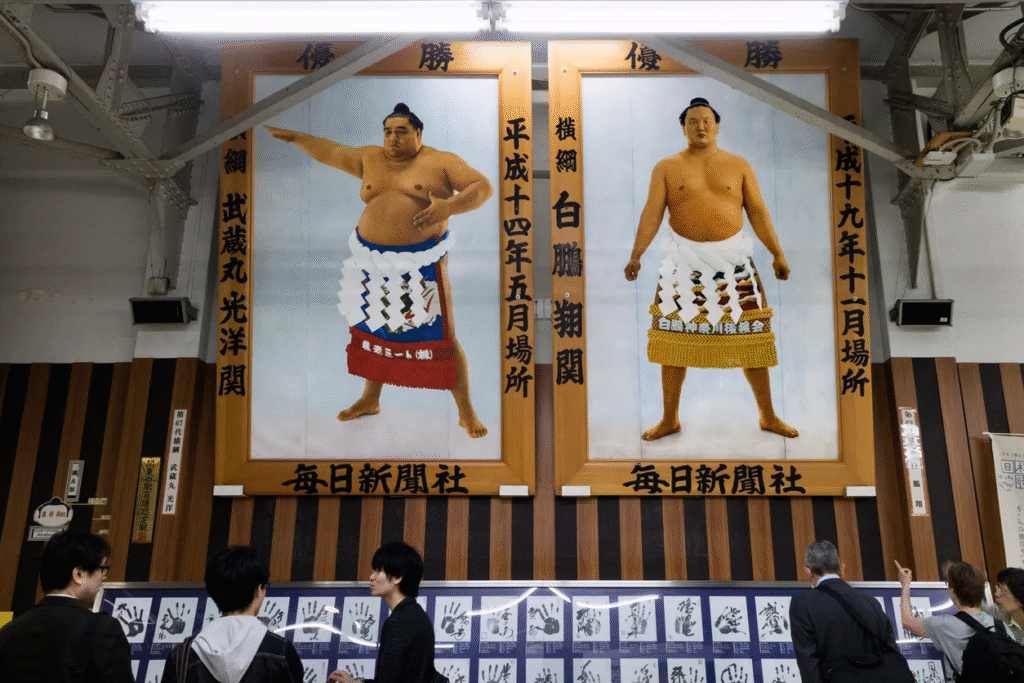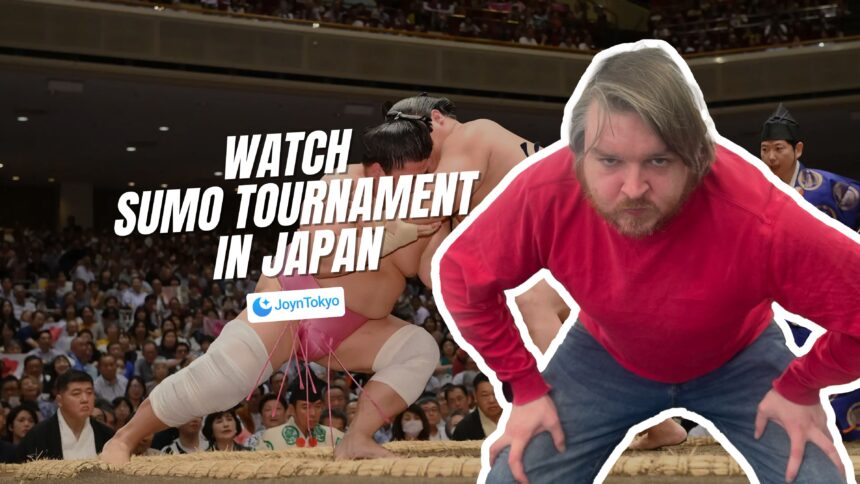Although Japan is well known abroad for its samurai history, and kendo (swordplay sometimes know as “Japanese fencing”) is a popular pastime for many, the national sport is: sumo. An ancient sport, it has not only a social but also a religious significance. And I’ve been to a couple of tournaments, so if you’re planning to attend during your time in Japan, let me tell you what to expect.
When You Arrive

One of the most interesting things about showing up to a sumo tournament is that the guy who takes your ticket… is a former sumo wrestler. This is because, as I learned from reading a book on the subject, the community tends to take care of their own, and so, after a sumo wrestler retires, they often take up jobs in sumo-related fields, including coaching, and even ticketing.
The first time I saw this, I was amazed: everyone stereotypes sumo wrestlers as very fat people (not for no reason, as we’ll get to), but it turns out that after retiring, and ceasing a daily diet of chanko-nabe (which I’ll discuss more below), there is nothing beneath the skin but muscle. The guy taking my ticket was one of the most muscular guys I’ve ever seen.
But beyond that, at Ryogoku Kokugikan National Sumo Arena, one of the first things you can do is visit the sumo museum, where you can see various artifacts from sumo tournaments and wrestlers of the past, including former champions, also known as Yokozuna.
Inside the Grounds

Once I got inside the grounds, it was a lot like being at a soccer match at Wembley or a college football game. I walked with my friend into a crowded hall of excited sports fans, buying books, newsletters, and other merchandise. I was once lucky enough to visit during the transitional period between one Emperor and another, I was able to get a daily schedule (something that has been published at every sumo tournament since ancient times) that had one Emperor listed under a new era.
This is also the place where you can get a healthy amount of food to eat. As you can imagine, there are healthy helpings of takoyaki, fried balls filled with octopus meat, and yakitori, and yakiniku, or grilled chicken and grilled beef.
But it’s chanko-nabe that is the real draw. Chanko-nabe is a special stew made with soup, fish, chicken, beef, and vegetables, for one reason and one reason only: to bulk up the sumo wrestlers. It is high in protein, very filling… and absolutely delicious.
It is so popular during tournaments that you can expect to wait in long, LONG lines. As I recall, when my friend and I waited for chanko-nabe, we were waiting for over 15 minutes. But trust me, it’s worth it; you’ll never get enough to become a powerful wrestler, but it is very delicious.
Watching the Event

One thing that not a lot of people know about sumo wrestling is that, rather than randomly selected sumo playing against one another over the course of a day, the “lesser-skilled” wresters dominate the earlier periods of the day, while the higher ranked competitors are saved for the end of the day.
That means that, while the best seats are reserved… you can watch the younger guys in good seats until the people who have reserved them arrive later in the day.
Another thing is that, while sumo has several ritual and religious purposes, it is, at the end of the day, still just a sport. And along with that, there are a lot of things that come with it. When my friend and I visited, there were a lot of people who were screaming for different wrestlers.
One in particular was very popular. It wasn’t just us, it was hundreds and hundreds of people raising our fists and screaming, “En-ho!”. He is one of the most popular sumo, and has been a heartthrob since his debut. And when we meant, my friend told me that it was not only acceptable, but joyous, to cheer for me. I did get a few funny looks (lots of Japanese people are surprised, amused by, but also fond of foreigners who take an interest in the national sport) but it was a heck of a good time.This was also the time that he was promoted to makuuchi, the top division of sumo wrestlers. Sometimes you just get lucky and see something that happens to a sportsman once in their life.
It was especially fun to see the wrestlers get stronger and stronger as the day went on. As I mentioned, sumo are very strong people, and are dramatically more agile than they are typically given credit in Western media.
In Summary
I cannot recommend going to a sumo tournament enough. It is a fun time if you want to experience Japanese culture, go to a sporting event, or just have fun being part of the crowd.


